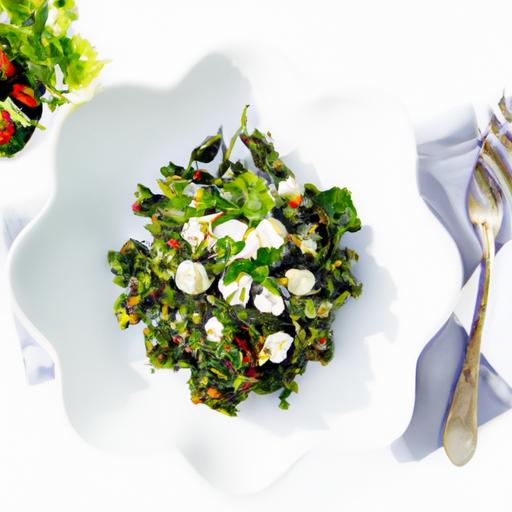In a world that never seems to slow down, finding a moment of restful sleep can feel like a rare treasure. Imagine drifting into a peaceful slumber embraced by the gentle scents of nature’s own remedies-herbs carefully chosen and woven into a pillow that cradles your dreams. Crafting herbal dream pillows is an age-old art that combines soothing aromatherapy with the tactile comfort of handmade care, offering a holistic lullaby for the mind and body. This guide invites you to explore the fragrant world of herbal dream pillows, unveiling the secrets behind their calming powers and showing you how to create your own personalized sleep companion. Sweet dreams, wrapped in the essence of nature, are just a stitch away.
Crafting Herbal Dream Pillows begins with selecting the ideal blend of fragrant herbs that encourage peaceful slumber and sweet dreams. This age-old practice harnesses nature’s calming botanicals-each chosen for their unique ability to soothe the senses and promote restful nights. Whether you favor the gentle earthiness of lavender or the uplifting scent of chamomile, this guide will lead you through every step to create your personal sleep sanctuary.
Prep and Cook Time
Total Time: 45 minutes
Yield
One standard-sized herbal dream pillow (approximately 12″ x 16″)
Difficulty Level
Easy to Medium – ideal for both beginners and seasoned DIY enthusiasts
Ingredients
- 1 cup dried lavender buds – for deep relaxation and anxiety relief
- ½ cup dried chamomile flowers – soothing and mood calming
- ½ cup dried lemon balm leaves – refreshing with mild sedative effects
- ¼ cup dried rosemary – invigorating but supports mental clarity
- ¼ cup dried peppermint leaves – invigorates senses without disrupting sleep
- 2 cups organic, unbleached cotton fabric (cut into two 12″ x 16″ pieces) for pillow casing
- 1 cup organic buckwheat hulls – natural filler that contours and breathes
- Thread and sewing needle or a sewing machine
- Optional: A few drops of lavender essential oil to enhance scent potency
Instructions
- Prepare your work surface: Lay out the two fabric pieces right sides facing each other. Pin the edges to keep steady for sewing.
- Mix the herbs: In a large bowl, gently combine dried lavender, chamomile, lemon balm, rosemary, and peppermint leaves to distribute their fragrances evenly.
- Fill the pillow: Place one fabric piece on a flat surface with the right side up. Sprinkle the herbal blend evenly over, then pour the buckwheat hulls on top, ensuring an even layer that fills without overstuffing.
- Seal your pillow: Cover with the second fabric piece, right side facing down. Sew along three sides with a tight, straight stitch (about ¼ inch from the edge), leaving one short side open for filling.
- Add the buckwheat hulls: If you haven’t stuffed earlier, add hulls now to your preferred firmness. For an extra aromatic boost, mix in a few drops of lavender essential oil before filling.
- Close the final seam: Fold in the edges of the open side and sew securely to prevent herbs from escaping.
- Fluff and shape: Gently knead and fluff the pillow to distribute the filling evenly for maximum comfort and scent release.
Tips for Success
- Use 100% natural, pesticide-free herbs to ensure safety and authentic aromatherapy effects.
- Experiment with smaller herb proportions or substitute with herbs such as valerian root or hops for different therapeutic qualities.
- Hand-sewing works perfectly if you don’t have a machine; just keep stitches tight to avoid filling leakage.
- To refresh your pillow’s scent after weeks of use, lightly mist with lavender essential oil and allow to air dry.
- If you experience allergic reactions, try single-herb pillows to isolate triggers before combining.
Serving Suggestions
Place your herbal dream pillow on your bed as a gentle reminder of tranquility. It can be used alongside your regular pillow or nestled under your cheek to inhale calming aromas directly. For an extra touch of luxury, pair your creation with a soft linen pillowcase or a pillow infused with calming colors like pale blue or lavender fabric covers.
| Herb | Primary Benefit | Scent Profile |
|---|---|---|
| Lavender | Reduces anxiety, improves sleep quality | Floral, sweet, herbal |
| Chamomile | Calms nerves, relieves insomnia | Apple-like, warm |
| Lemon Balm | Eases stress, uplifts mood | Fresh, lemony |
| Rosemary | Sharpens mind, reduces mental fatigue | Woody, pine-like |
| Peppermint | Refreshes senses, alleviates tension | Minty, cool |
For more tips on herbal sleep remedies, visit our detailed post on natural sleep aids. Enhance your knowledge further by exploring the extensive aromatherapy benefits documented by the National Association for Holistic Aromatherapy.

Q&A
Q&A: Crafting Herbal Dream Pillows – A Soothing Guide to Sleep
Q1: What exactly is a herbal dream pillow?
A herbal dream pillow is a small sachet filled with a blend of fragrant herbs designed to promote relaxation and encourage peaceful sleep. Traditionally tucked under your pillow or beside your bed, these pillows release soothing aromas that can ease the mind, calm restless thoughts, and invite sweet dreams.
Q2: Which herbs are best for creating a dream pillow?
Lavender tops the list for its calming scent and sleep-enhancing properties. Other popular choices include chamomile (known for its gentle relaxation), hops (to ease anxiety), valerian root (a natural sedative), and mugwort (historically used to encourage vivid dreams). Combining these herbs allows you to customize your pillow’s aroma and dream qualities.
Q3: How do I craft my own herbal dream pillow?
Start with a small, breathable fabric pouch or sew your own from linen or cotton. Mix dried herbs in your preferred ratio-commonly 2 parts lavender, 1 part chamomile, and a pinch of valerian root. Fill the pouch gently to about two-thirds full; you want it fluffy and aromatic, not heavy. Tie it securely and place it near your pillow or inside your pillowcase.
Q4: Can herbal dream pillows really improve sleep?
While individual results vary, many find the gentle scents act as natural sleep aids by reducing stress and signaling the brain that it’s time to wind down. The power of aromatherapy, combined with ritualistic placement, can create a serene bedtime routine that lulls the mind toward rest.
Q5: Are there any precautions to consider?
Yes! Some herbs may cause allergic reactions or interact with medications. Always use dried herbs from reputable sources and test your skin’s sensitivity by holding the pillow near your face first. Avoid using dream pillows on children without consulting a healthcare provider, and ensure the pillow’s materials are clean and well-maintained to prevent mold or dust.
Q6: How do I refresh or store my dream pillow?
After several weeks of use, the herbs may lose their potency. Refresh the pillow by adding a few drops of essential oils that match your herb blend or by mixing in more dried herbs. When not in use, store it in an airtight container away from light and moisture to preserve its fragrance and benefits.
Let your herbal dream pillow be a fragrant lullaby, weaving calm into the fabric of your nights-one blissful breath at a time. Sweet dreams await!
Closing Remarks
As twilight deepens and the quiet hum of the night takes hold, your handcrafted herbal dream pillow stands ready-a small sachet of nature’s gentle magic. By weaving together fragrant botanicals and personal intention, you’ve created more than just a sleep aid; you’ve fashioned a nightly ritual that soothes both body and mind. With each breath drawn through your herbal companion, may your dreams carry you to tranquil realms, and may restful sleep become a cherished companion. Embrace the art of crafting your own dream pillows, and let the healing whispers of herbs guide you softly into the realm of peaceful slumber.


